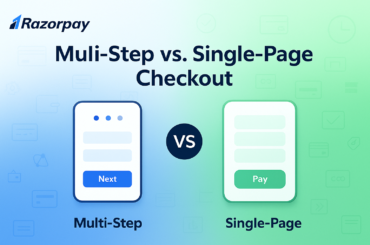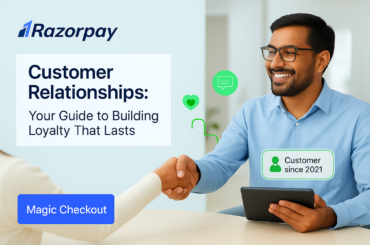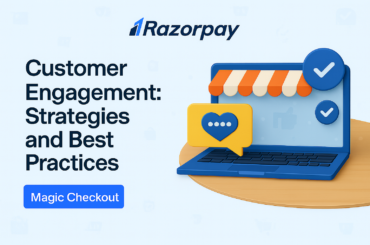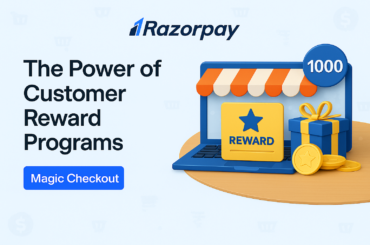Table of Contents
A Quick Note Before We Deep Dive: How to Use This Guide
This comprehensive guide covers everything you need to know about optimizing your checkout process for increased conversions and a superior customer experience. Given the depth of information, feel free to use this note as your personal roadmap.
Already familiar with certain aspects of checkout optimization? Take a quick look at the table of contents. You can easily scan the topics and jump directly to the sections that are most relevant to your current needs and challenges.
New to understanding the critical role of checkout? We encourage you to go through this guide sequentially to build a strong foundational understanding. To make the most of your learning journey, bookmark this page. This will allow you to return and resume reading at your convenience, exploring each section at your own pace.
Each section introduces a core concept, and for deeper insights, you can explore our dedicated guides linked throughout this article.
For those who prefer to jump straight into optimizing your checkout, we’ve got you covered:
Here’s what you’ll learn in this guide:
📌 What checkout is and why it matters across different business models.
📌 How to reduce cart abandonment and increase completed purchases.
📌 Best practices for optimizing checkout speed, UX, and mobile experience.
📌 Conversion rate optimization (CRO) techniques to improve order completion rates.
📌 How payment flexibility, personalization, and trust signals impact conversions.
📌 Post-purchase engagement tactics that build customer loyalty and retention.
By the end of this guide, you’ll have a complete understanding of how to create a seamless, high-converting checkout experience that maximizes revenue, reduces friction, and keeps customers coming back.
Define Checkout
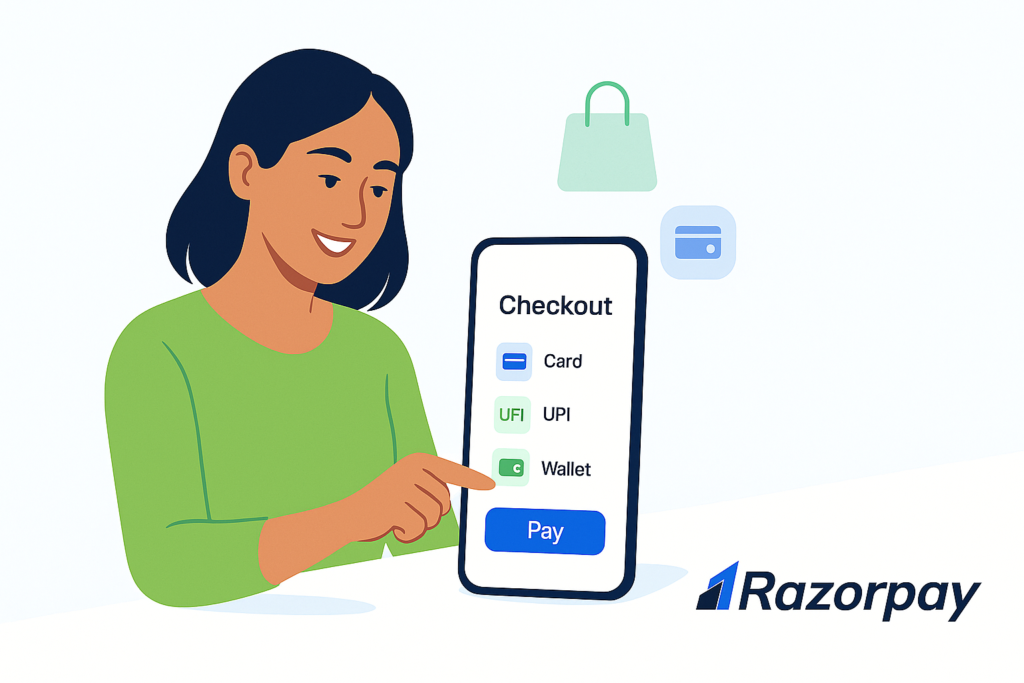 Understanding the Checkout Process
Understanding the Checkout Process
Checkout is the final and most crucial step in an online purchase. It’s where a potential buyer reviews their order, selects a payment method, and completes the transaction. While it may seem like a simple process, even minor friction, such as slow load times, unnecessary form fields, or limited payment options, can cause shoppers to abandon their carts.
That’s why it’s important to define checkout clearly, not just as a transaction, but as a strategic touchpoint in the customer journey. A seamless checkout experience ensures that every customer who intends to buy actually completes the purchase, maximizing revenue and improving customer satisfaction. Optimized checkouts are designed to:
✅ Reduce friction by eliminating unnecessary steps and making payments effortless.
✅ Increase conversion rates by providing a fast, intuitive experience.
✅ Build trust by offering secure payment options and clear order summaries.
Many leading e-commerce brands, including Amazon and Shopify merchants, treat checkout as a growth strategy rather than just a transaction step. The right optimizations can turn more browsers into buyers and create repeat customers.
Read more for an in-depth understanding: Define Checkout- What It Means & Why It Matters
Why Checkout Defines the Success of Your Online Store
The checkout process is the most critical step in an online purchase. To define checkout in simple terms, it is the final stage where a shopper completes their purchase by entering payment and shipping details. A smooth, optimized checkout flow can increase conversions, reduce cart abandonment, and improve customer satisfaction, while a poorly designed one can lead to frustrated shoppers leaving without completing their purchase.
Many businesses invest heavily in driving traffic and generating demand, yet checkout remains an untapped opportunity for growth. While acquiring customers is important, ensuring they complete their purchases is just as critical. A well-optimized checkout process removes friction, enhances trust, and ensures every visitor has the best possible chance of converting into a paying customer.
A well-optimized checkout isn’t just about speed and convenience. It is a growth driver that directly impacts:
✅ Conversion Rates – A seamless checkout reduces friction, encouraging more customers to complete their purchases.
✅ Customer Experience – An intuitive, hassle-free payment process builds trust and increases repeat purchases.
✅ Revenue Growth – Smart checkout strategies, such as one-click checkout, multiple payment options, and checkout customization, help increase average order value (AOV) and retention.
The brands that lead in e-commerce, Amazon, Shopify stores, and direct-to-consumer (D2C) brands, prioritize checkout optimization because they know it directly impacts profitability and customer lifetime value (CLTV).
If checkout is the final step in the purchase journey, why not make it a competitive advantage?
Types of Checkout Processes
Not all checkouts work the same way. Different business models and industries require tailored checkout processes to match customer expectations.
Guest Checkout vs. Registered Checkout
Requiring users to create an account before purchasing can lead to frustration and drop-offs. Guest checkout allows shoppers to complete their purchases without mandatory registration, speeding up the process.
However, registered checkout has its advantages, such as:
📌 Saved payment details for faster repeat purchases.
📌 Personalized offers and loyalty rewards based on purchase history.
📌 Easier order tracking and returns, improving customer satisfaction.
So, which one should your business choose? The best approach often combines both options, allowing customers to check out quickly as guests while offering incentives for account creation.
Standard vs. One-Click Checkout
Shoppers expect speed and convenience, which is why one-click checkout is gaining traction. Unlike standard checkout, where users enter payment details manually, one-click checkout:
✅ Auto-fills saved payment and shipping details to reduce steps.
✅ Speeds up transactions, reducing drop-offs.
✅ Works best for returning customers, increasing repeat purchases.
Many businesses report that one-click checkout improves conversion rates by 35% because it removes the final layer of friction before purchase.
Root Deep, a premium hair and scalp care brand, experienced a 30% increase in checkout completion rates after adopting Razorpay’s Magic Checkout solution, which simplified the payment process for customers. Read the full case study here.
Multi-Step vs. Single-Page Checkout
Which is better: a multi-step checkout flow that separates each stage into different screens or a single-page checkout that consolidates everything into one view?
💡 Multi-Step Checkout Benefits
📌 Less overwhelming for shoppers, as each step focuses on one action.
📌 Easier to track drop-off points, allowing businesses to optimize problem areas.
📌 Ideal for high-ticket or customizable products, where additional details may be required.
💡 Single-Page Checkout Benefits
📌 Faster process, reducing distractions, and boosting conversions.
📌 Great for mobile users, who prefer a streamlined experience.
📌 Best for impulse buys, where speed matters more than additional form fields.
Read More: Multi-Step vs. Single-Page Checkout
Checkout for Different Business Models
Checkout isn’t the same for every business. What works for a D2C brand might not be ideal for an online marketplace, and a subscription business will have entirely different checkout requirements.
Each business model has unique customer expectations, and the checkout process must be tailored to:
✅ Reduce friction based on purchasing behavior (impulse vs. high-consideration purchases).
✅ Offer the right payment options based on transaction types (one-time vs. recurring payments).
✅ Minimize drop-offs and encourage repeat purchases with a checkout flow that aligns with customer intent.
Here’s how different business models approach checkout differently:
D2C vs. Marketplace Checkout
D2C brands and online marketplaces both sell products online, but their checkout experiences serve different purposes.
📌 D2C Checkout Priorities:
- Brand consistency & customization – The checkout should match the brand’s identity and build customer trust.
- Frictionless buying experience – A shorter, faster checkout helps reduce cart abandonment.
- Loyalty & retention strategies – Many D2C brands offer membership perks, exclusive discounts, or early access to new products.
📌 Marketplace Checkout Priorities:
- Multi-vendor transactions – Customers may buy from multiple sellers in one order, requiring split payments and different shipping timelines.
- Standardized experience – Unlike D2C brands, marketplaces keep checkout uniform to maintain consistency across sellers.
- Customer protection policies – Buyers trust marketplaces because of refund guarantees, buyer protection, and seller ratings.
Omnichannel Checkout: Blending Online & Offline Payments
Retailers today operate across multiple channels: physical stores, e-commerce websites, mobile apps, and even social commerce. A seamless omnichannel checkout ensures customers can start their purchase on one platform and complete it on another without friction.
💡 What Makes Omnichannel Checkout Different?
✅ Unified shopping carts – Customers can add items on mobile and check out later on desktop or in-store.
✅ Multiple payment touchpoints – QR code payments, tap-to-pay, and BNPL (Buy Now, Pay Later) options are crucial.
✅ Consistent pricing & promotions – Discounts, gift cards, and loyalty points must sync across all channels.
Subscription-Based Checkout: Handling Recurring Payments
Unlike traditional e-commerce, subscription-based businesses need a checkout that supports:
📌 Recurring billing & auto-renewals – Customers should be able to set and forget their payments without manual intervention.
📌 Flexible subscription management – Easy plan upgrades, downgrades, and cancellations improve retention.
📌 Seamless payment retries – Automated failed payment recovery prevents involuntary churn.
💡 Why Subscription Checkout Matters:
A complex checkout experience can increase churn rates, while a smooth, automated system helps businesses retain subscribers and increase lifetime value.
Customer Experience & Checkout
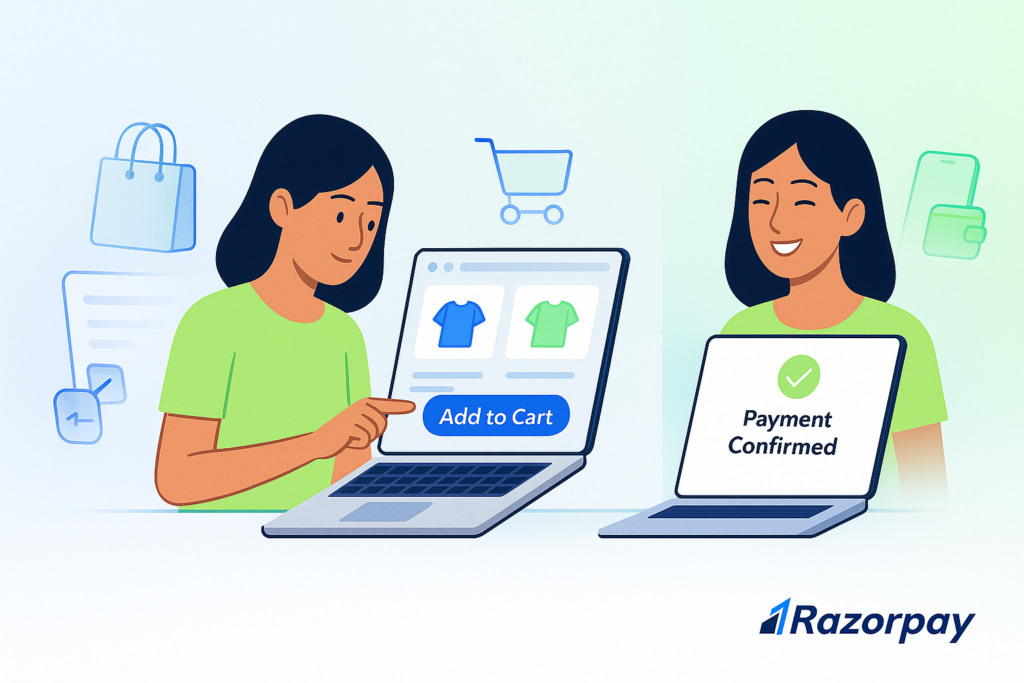 The Role of Checkout in Customer Experience
The Role of Checkout in Customer Experience
A seamless checkout process is a key factor in whether customers complete their purchase or leave their cart behind. If checkout is slow, confusing, or requires too many steps, even the most interested buyers may give up before placing an order.
How Customer Experience Has Changed Over Time
The way customers shop has evolved significantly. From traditional brick-and-mortar stores to mobile commerce, the focus has shifted toward speed, convenience, and personalization. Modern shoppers expect a frictionless experience across all touchpoints, making checkout a critical factor in enhancing the shopping experience.
Customers expect a checkout experience that is:
✅ Fast – Delays increase drop-offs.
✅ Simple – A complicated process creates frustration.
✅ Secure – Visible trust signals reduce hesitation.
When checkout meets these expectations, businesses see higher conversions, increased repeat purchases, and improved customer trust.
Related Read- The Impact of Checkout on Customer Experience
Key Factors That Enhance Checkout Experience
A well-structured checkout flow makes it easy for customers to complete their purchases while ensuring security and reliability.
Creating a Frictionless Checkout Flow
The best checkouts feel effortless. Shoppers shouldn’t have to stop and think about what to do next.
📌 What makes a checkout experience smooth?
- Minimal form fields – Reducing unnecessary steps improves completion rates.
- Flexible payment options – Customers are more likely to convert when they can use their preferred method.
- Mobile optimization – Since most online shoppers use mobile devices, the process must be designed for smaller screens.
For a breakdown of best practices, check out our blog on how to enhance customer experience.
The Role of Checkout Design in Conversions
Checkout layout and design can directly influence whether a customer follows through with their purchase.
💡 How to create a checkout that converts:
✅ Progress indicators – Showing customers where they are in the process prevents confusion.
✅ Clear, distraction-free layouts – Too many elements on the screen can overwhelm buyers.
✅ Error prevention – Real-time validation helps customers enter details correctly on the first attempt.
A cluttered checkout page leads to unnecessary frustration, while a well-structured flow increases trust and conversions.
Why Checkout Speed Matters
Speed plays a critical role in whether customers complete their purchase. Research shows that a one-second delay in checkout can decrease conversions by 7%.
📌 Common reasons for slow checkout speeds:
- Heavy scripts or unnecessary third-party plugins.
- Poor mobile responsiveness.
- Redirect-based payment gateways slow down processing.
💡 How to improve checkout speed:
✅ Reduce unnecessary form fields.
✅ Enable autofill for returning customers.
✅ Use high-performance payment gateways to avoid processing delays.
How Cart Abandonment Ties into Checkout Experience
Even when customers add items to their cart, many don’t complete their purchases. The average cart abandonment rate is over 70%, and checkout-related issues are a major factor.
Why Customers Abandon Carts
Shoppers often leave their carts behind due to:
📌 Unexpected costs, such as high shipping fees.
📌 Complicated checkout forms that take too long to complete.
📌 Limited payment options that don’t align with their preferences.
Each of these factors contributes to a higher cart abandonment rate. The checkout process should be designed to remove these roadblocks and guide shoppers smoothly toward completing their purchase.
Best Practices for Abandoned Cart Recovery
When a customer abandons their cart, businesses still have a chance to bring them back.
📌 How to recover lost sales:
- Send cart abandonment emails with a reminder or incentive.
- Use exit-intent popups that offer discounts or free shipping.
- Run retargeting ads to remind customers about their unpurchased items.
💡 Cart recovery strategies can reclaim up to 30% of lost sales. Learn how to implement them in Cart Abandonment Recovery Strategies.
Optimizing Mobile Checkout for Higher Conversions
With more than 70% of e-commerce transactions happening on mobile, a checkout designed for desktops alone won’t cut it.
Isak CR, a niche luxury perfumery brand, optimized its mobile checkout experience with Razorpay’s Magic Checkout, achieving a 24.70% improvement in checkout speed. By addressing friction points in mobile payments, the brand successfully reduced cart abandonment and improved conversions. Read the full case study here.
Why Mobile Checkout Optimization Matters
📌 Common mobile checkout challenges:
- Small form fields that are difficult to tap.
- Pages that load slowly on mobile networks.
- Redirects that make the process feel complicated.
💡 How to improve mobile checkout:
✅ Enable one-click payments through wallets and UPI.
✅ Use biometric authentication for fast logins.
✅ Ensure a responsive, clutter-free design that adapts to different screen sizes.
Advantages of Mobile Commerce
The rise of mobile shopping has transformed how consumers interact with brands. The advantages of mobile commerce go beyond convenience, making it a key driver of business growth.
✔️ Higher engagement rates – Shoppers are more likely to browse and complete purchases when the mobile experience is seamless.
✔️ Faster checkout experiences – Features like one-click payments and biometric authentication make transactions quicker.
✔️ Personalized shopping journeys – Mobile apps enable tailored recommendations and loyalty rewards.
Conversion Rate Optimization (CRO) for Checkout
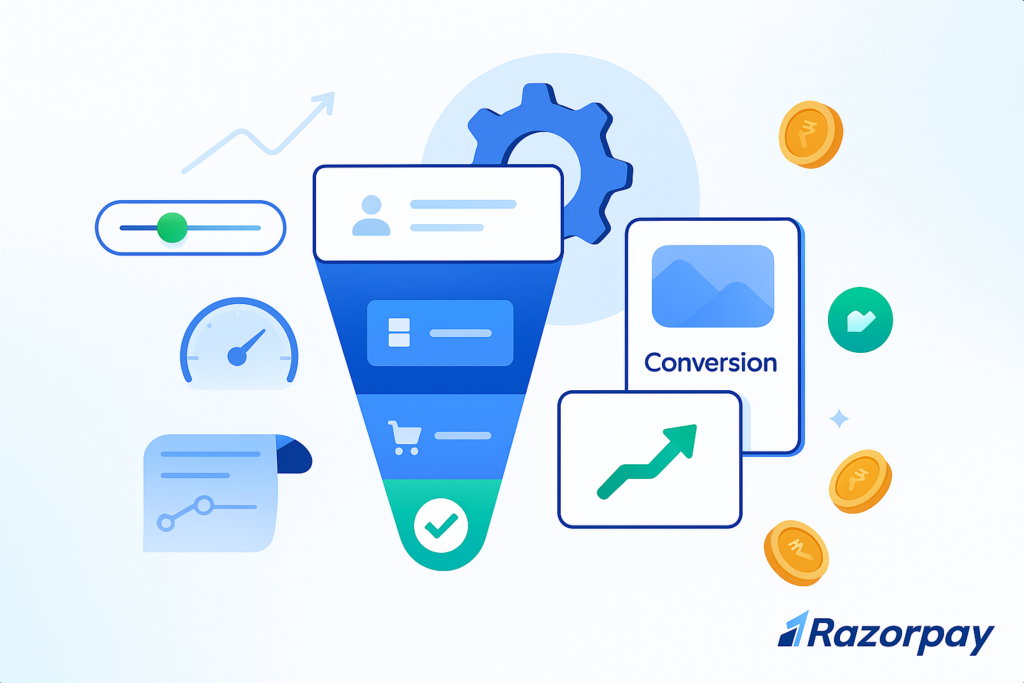 How Checkout Directly Impacts Conversion Rates
How Checkout Directly Impacts Conversion Rates
A well-optimized checkout is one of the most effective ways to increase order completion rates and revenue. Even small improvements, such as reducing form fields, enabling autofill, or offering multiple payment methods, can lead to higher conversions. For example, offering a fast checkout option can significantly reduce the time it takes for a customer to complete their purchase.
Businesses that optimize their checkout experience see:
✅ Higher conversion rates by removing unnecessary friction.
✅ Fewer cart abandonments due to a faster, more intuitive process.
✅ Increased order value through upsells and personalization.
Since checkout is the final step before purchase, even minor issues can lead to drop-offs. That’s why brands that focus on CRO for checkout consistently outperform competitors in sales and customer retention.
Read more for an in-depth understanding: Conversion Rate Optimization: The Complete Guide
Key CRO Strategies for Checkout
AB Testing for Checkout Pages
AB testing helps businesses determine which checkout design, layout, or payment options lead to higher conversions. By testing variations, brands can:
📌 Identify friction points – See where customers drop off during checkout.
📌 Test different form structures – Compare single-page vs. multi-step checkout.
📌 Optimize payment methods – Measure conversion rates for BNPL, UPI, wallets, and credit cards.
Optimizing Payment Methods for Higher Conversions
Customers expect flexible and fast payment options, and the lack of their preferred method can lead to checkout drop-offs. Offering BNPL(Buy Now, Pay Later) options, for example, can cater to customers seeking more flexible payment terms. In some markets, understanding the cash on delivery meaning and offering it as an option is crucial for reaching a wider customer base. To ensure secure transactions, businesses must utilize a reliable payment processing system.
📌 How payment methods impact conversions:
- BNPL increases AOV and conversions by allowing customers to split payments.
- UPI & digital wallets make checkout faster, especially for mobile shoppers.
- Prepaid incentives encourage users to choose prepaid over COD, reducing return-to-origin (RTO) risks.
- Credit card acceptance is essential for a wide range of customers, offering familiarity and security, though fees can be a consideration for businesses.
- Debit card options provide a direct link to a customer’s bank account, offering a common and convenient payment method.
- Digital wallets can enhance security by tokenizing payment information, reducing the risk of fraud.
💡 Businesses that offer multiple payment options see up to a 20% increase in conversions.
Related Read: Selecting the Right Online Payment Methods
Checkout Form Optimization: Reducing Drop-Offs
Checkout forms are a common source of friction and frustration for shoppers. Overly long or complex forms often lead to cart abandonment. Optimizing the checkout process to offer a one-click checkout option for returning customers can significantly streamline the experience.
📌 How to optimize checkout forms:
✅ Remove unnecessary fields and keep only essential information.
✅ Enable autofill and address validation for faster form completion.
✅ Use error messaging in real-time so users can fix mistakes quickly.
💡 A streamlined checkout form can increase conversion rates by 26%.
Case studies: One-Click Checkout Case studies
Using Trust Signals to Increase Conversions
Shoppers need to feel confident before completing a purchase. Without visible security indicators, refund policies, or customer reviews, many hesitate to enter their payment details. Ultimately, all of these optimizations contribute to how to increase online sales.
📌 Essential trust-building elements for checkout:
- SSL certificates and security badges (e.g., PCI compliance, HTTPS).
- Clear refund and return policies are displayed near the payment button.
- Customer testimonials or real-time purchase activity to reinforce credibility.
💡 Adding trust signals at checkout has been shown to increase conversions by up to 42%.
Read More: Buyer Protection Case Studies
Reducing Distractions for a More Focused Checkout
Checkout should be a frictionless, distraction-free experience. Too many exit points, pop-ups, or additional steps can pull customers away from completing their purchases.
📌 How to minimize distractions at checkout:
✅ Remove unnecessary navigation links or exit points.
✅ Use a clean, simple design that keeps users focused on order completion.
✅ Highlight the primary CTA (“Complete Purchase”) prominently.
💡 A distraction-free checkout page improves conversion rates by 15-20%.
Customization & Dynamic Checkout Experiences
Tailoring your checkout process can significantly lift conversion rates by creating a smoother, more relevant experience for each customer.
📌 Key Areas of Checkout Customization:
- Dynamic Field Optimization: Show only essential fields based on context, reducing friction.
- Intelligent Payment Suggestions: Highlight preferred or relevant payment options for each user.
- Localized Experience: Adapt currency and language based on the customer’s location.
💡 Implementing these targeted customizations can lead to a more personalized checkout, potentially boosting conversions by up to 30%.
Related Read- Make Your Checkout Truly Your Own: Checkout Customization Unleashed
Business Growth Tips: Checkout as a Sales Driver
 A well-optimized checkout process does more than complete a sale. It acts as a growth engine by increasing order value, reducing operational inefficiencies, and improving customer retention.
A well-optimized checkout process does more than complete a sale. It acts as a growth engine by increasing order value, reducing operational inefficiencies, and improving customer retention.
Businesses that treat checkout as a strategic revenue driver see:
✅ Higher average order value (AOV) by leveraging upsells, dynamic pricing, and BNPL.
✅ Increased prepaid transactions through incentives and COD optimization.
✅ Better customer retention by streamlining post-purchase experiences.
A checkout process designed with growth in mind ensures higher conversions while maximizing revenue per transaction.
Related Read: Business Growth Tips: The Ultimate Guide to Proven Strategies and Actionable Advice
Leveraging Checkout to Drive Sales Growth
Subscription-Based Checkout Models
Subscription-based businesses thrive on predictable, recurring revenue, but checkout must be optimized for seamless auto-renewals and customer retention.
📌 Best practices for subscription-based checkout:
✅ Frictionless sign-ups – Minimize form fields to reduce drop-offs.
✅ Flexible plan management – Allow customers to upgrade, downgrade, or pause subscriptions easily.
✅ Smart payment recovery – Implement automated retries to recover failed payments.
💡 Subscription businesses with seamless checkout see up to a 40% reduction in churn.
How Payment Flexibility Increases Sales
Giving customers more ways to pay leads to higher conversions. Shoppers often abandon the checkout when their preferred method isn’t available.
📌 High-performing payment options:
- BNPL (Buy Now, Pay Later): Increases AOV by allowing customers to split payments.
- UPI & digital wallets: Improve speed and ease, especially for mobile users.
- Prepaid vs. COD incentives: Encourages prepaid orders, reducing RTO risks.
💡 Businesses that offer diverse payment methods see up to a 20% increase in completed transactions.
Smart COD Strategies to Boost Prepaid Share
COD remains popular in certain markets, but it increases RTO risks and operational costs. Businesses can reduce COD reliance while increasing prepaid orders through strategic checkout optimizations.
📌 Ways to optimize COD checkout:
✅ Offer partial COD payments – Customers pay a portion upfront, reducing cancellations.
✅ Implement COD fee adjustments – Charge a small fee to encourage prepaid adoption.
✅ Use AI-based risk detection – Flag and restrict COD for high-risk shoppers.
💡 Smart COD strategies can boost prepaid orders by 30% and reduce RTO by 70%.
Related Read: Simplify Payments with Partial COD
Dynamic Pricing & Personalized Discounts
Adjusting pricing based on customer behavior, location, or cart value can increase sales without lowering profitability.
📌 Dynamic pricing strategies for checkout:
✅ Offer location-based discounts to improve regional conversions.
✅ Use AOV-based incentives – “Spend ₹500 more to get free shipping.”
✅ Provide first-time buyer discounts at checkout to boost conversions.
💡 Personalized pricing strategies can increase conversion rates by 25%.
Localized Payment & Pricing Strategies
For businesses selling internationally, checkout must adapt to regional payment preferences, currencies, and tax structures.
📌 How to localize checkout for global sales:
✅ Display prices in local currency to improve trust.
✅ Offer country-specific payment methods (e.g., Klarna in Europe, UPI in India).
✅ Simplify tax and duty calculations to avoid confusion.
💡 Localized checkout strategies can increase international conversion rates by up to 30%.
Psychological Triggers That Influence Checkout Behavior
Small adjustments at checkout can influence buying behavior and encourage customers to complete their purchase.
Upselling & Cross-Selling at Checkout
Adding relevant upsells or cross-sells before payment increases order value without disrupting the checkout flow.
📌 Best practices for upselling in checkout:
✅ Show related products before final payment.
✅ Offer bundle discounts to increase AOV.
✅ Use one-click post-purchase upsells for add-ons.
💡 Businesses implementing checkout upsells see an AOV increase of 15-25%.
Related Read- Upselling and Cross-selling Strategies for E-commerce
Creating Urgency & Scarcity to Drive Conversions
Shoppers are more likely to complete a purchase when they feel a sense of urgency.
📌 Ways to apply urgency at checkout:
✅ Show low-stock indicators – “Only 2 left in stock!”
✅ Add countdown timers for limited-time discounts.
✅ Offer exclusive checkout deals that expire soon.
💡 Urgency-driven checkout strategies can increase conversions by 35%.
Gamifying Checkout & Loyalty Programs
Adding rewards and gamification elements to the checkout can improve engagement and increase repeat purchases.
📌 Ways to gamify checkout:
✅ Offer spin-to-win discounts for first-time buyers.
✅ Show loyalty point earnings before purchase.
✅ Reward prepaid purchases with exclusive offers.
💡 Gamification at checkout increases repeat purchases by 15%.
Related Read: To have an in-depth understanding, read our detailed blog on Loyalty Programs
Reducing Operational Costs & Fraud Through Smart Checkout Strategies
A well-optimized checkout increases sales and helps businesses reduce financial risks, from chargebacks and fraud to high COD-related costs.
Preventing Checkout Fraud with AI & Risk Scoring
Fraudulent transactions and chargebacks can significantly impact a business’s bottom line. AI-powered fraud detection helps identify and block high-risk orders before they happen.
📌 Ways to reduce fraud at checkout:
✅ AI-based transaction monitoring – Detects suspicious behavior and flags high-risk purchases.
✅ OTP & CVV verification – Adds an extra layer of security for new or high-value orders.
✅ Automated risk scoring – Blocks potentially fraudulent transactions in real-time.
💡 Businesses using AI-driven fraud prevention see a 50% reduction in chargebacks and fraudulent transactions.
Reducing Payment Failures to Improve Revenue
Failed transactions create customer frustration and lost sales. Checkout optimization can help businesses recover payments that might otherwise be abandoned.
📌 Best practices to reduce payment failures:
✅ Enable automatic payment retries for failed transactions.
✅ Offer alternative payment methods when a card declines.
✅ Optimize payment routing to ensure the highest success rates.
💡 Reducing payment failures can increase successful transactions by up to 15%.
Optimizing COD Fees to Reduce RTO Costs
COD orders carry a higher risk of returns and cancellations, leading to increased logistics costs and lost revenue. Businesses can reduce these risks by strategically adjusting COD fees.
📌 How to optimize COD fees:
✅ Apply higher COD fees for high-risk orders to encourage prepaid payments.
✅ Offer discounts or cashback on prepaid transactions.
✅ Use AI-driven risk analysis to adjust COD pricing dynamically.
💡 Optimized COD fees can reduce RTO costs by up to 30%.
Managing Chargebacks & Disputes
Excessive chargebacks can lead to penalties from payment providers and lost revenue. Implementing clear policies and proactive fraud prevention can reduce disputes.
📌 How to lower chargeback risks:
✅ Display refund and return policies clearly at checkout.
✅ Use chargeback alerts to resolve disputes before they escalate.
✅ Verify high-value orders through authentication measures.
💡 Businesses that actively manage chargebacks see a 40% reduction in dispute-related losses.
One-Tap Checkout for Returning Customers
For repeat customers, a long or repetitive checkout process can feel unnecessary. One-tap checkout simplifies the process by pre-filling customer details and enabling instant payments, reducing the time it takes to complete a purchase.
📌 How one-tap checkout improves conversions:
✅ Pre-saved addresses and payment details allow faster checkouts without re-entering information.
✅ Biometric authentication (fingerprint or face ID) enhances security while keeping the process frictionless.
✅ Auto-detected preferred payment methods help customers complete transactions in seconds.
💡 One-tap checkout reduces checkout time by up to 60% and increases repeat purchases by 25%.
Related read: The Ultimate Guide to Proven Strategies and Actionable Advice
Loyalty Programs and Post-Purchase Engagement
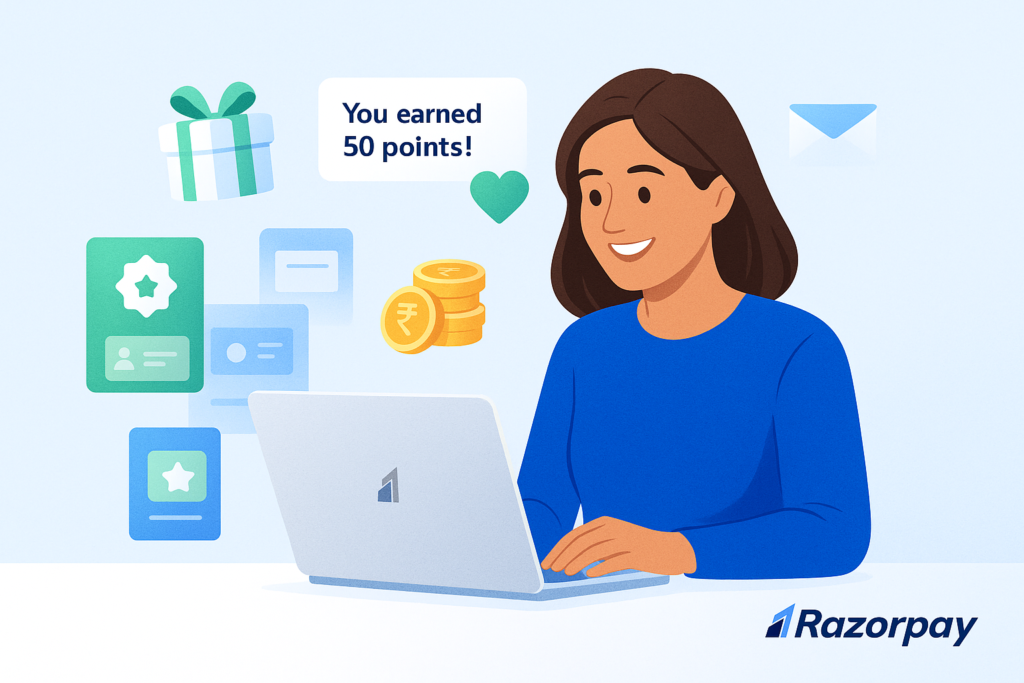 A great checkout experience doesn’t just secure a sale—it lays the foundation for long-term customer loyalty. Businesses that focus on post-purchase engagement see:
A great checkout experience doesn’t just secure a sale—it lays the foundation for long-term customer loyalty. Businesses that focus on post-purchase engagement see:
✅ Higher repeat purchase rates by encouraging ongoing interactions.
✅ Stronger brand loyalty through rewards and personalized experiences.
✅ Reduced churn and returns by optimizing post-purchase communication and buyer protection.
A seamless post-checkout experience helps businesses turn first-time shoppers into lifelong customers.
Related Read: The Power of Customer Reward Programs
Customer Engagement: Strategies and Best Practices
Creating meaningful and ongoing customer interactions is essential for business success. Customer engagement goes far beyond mere transactions — it’s about building lasting emotional and behavioral connections with your audience across all touchpoints.
Fully engaged customers deliver 23% more profitability compared to average customers, and even a 1% increase in satisfaction can improve retention by up to 5%. Clearly, engagement is not just a metric; it’s a growth engine.
We explore the core pillars, strategies, and tools needed to drive customer engagement in detail in our comprehensive guide. If you’re looking to truly understand what drives long-term loyalty, advocacy, and revenue, this is the place to start.
💡 Explore the Full Blog: Customer Engagement: Strategies and Best Practices
Why Loyalty Starts at Checkout
Checkout isn’t just the final step of a transaction. It’s where trust is reinforced, engagement begins, and customer relationships take shape.
How Customer Rewards Programs Increase Retention
Loyalty programs incentivize customers to return by offering exclusive rewards, discounts, and perks.
📌 Best ways to integrate loyalty programs at checkout:
✅ Show loyalty points earned for each purchase.
✅ Offer discounts for repeat buyers directly in the checkout flow.
✅ Provide VIP tiers for high-value customers with exclusive benefits.
💡 Businesses that integrate loyalty rewards at checkout see a 15% boost in repeat purchases.
Related Read: 28 Types of Coupons
Checkout-Integrated Engagement Strategies
Engagement shouldn’t stop after checkout. The right post-purchase interactions keep customers engaged and encourage future transactions.
📌 Best post-purchase engagement strategies:
✅ Personalized order confirmation emails with tailored product recommendations.
✅ WhatsApp and SMS updates to keep customers informed about shipping and delivery.
✅ Re-engagement campaigns that offer time-sensitive discounts for their next purchase.
💡 Automated post-purchase engagement increases customer retention by 30%.
The Role of Customer Relationship Management Post-Checkout
Building long-term relationships with customers requires ongoing interactions beyond the initial purchase.
📌 How CRM improves post-purchase retention:
✅ Tracks customer preferences and past purchases to offer personalized recommendations.
✅ Automates follow-ups and feedback requests to maintain engagement.
✅ Helps businesses identify high-value customers for targeted loyalty offers.
💡 Brands that use CRM-driven post-purchase engagement see a 20% increase in customer lifetime value (CLTV).
Full Blog: Customer Relationship: Your Complete Guide to Building Lasting Customer Loyalty
Reducing Returns & Post-Purchase Challenges
Even after a successful sale, poor post-purchase experiences, like complicated returns or unclear policies, can lead to customer frustration and lost loyalty.
Indiehaat, a curated marketplace for Indian handicrafts, addressed these challenges by adopting Razorpay’s Buyer Protection program. With clear refund policies and secure payment guarantees, the brand reduced cancellations and ensured greater customer satisfaction, leading to a 77% increase in conversion rate. Read the full case study here.
Understanding Return to Origin (RTO) in E-commerce
RTO happens when an order fails to reach the customer and is returned to the seller, leading to revenue loss and increased operational costs.
📌 Common reasons for high RTO rates:
✅ COD orders where the buyer refuses delivery.
✅ Incorrect addresses or failed delivery attempts.
✅ Customer uncertainty due to lack of order confirmation.
💡 Reducing RTO by optimizing COD and delivery confirmations can cut return rates by up to 70%.
Full Blog: Return to Origin: Causes, Business Impact, and Solutions for E-commerce
How Buyer Protection Impacts Customer Trust
Customers are more likely to complete a purchase when they feel secure about refunds, returns, and fraud protection.
📌 Ways to build trust through buyer protection:
✅ Clearly display refund and return policies at checkout.
✅ Offer purchase protection for high-value orders.
✅ Provide fraud prevention guarantees for secure transactions.
💡 Stores that emphasize buyer protection see a 25% increase in completed transactions.
Full Blog: Buyer Protection: The New Standard in Fulfillment Guarantees
Checkout Security Measures to Prevent Fraud
Fraud prevention is critical for maintaining customer trust and reducing chargebacks or disputed transactions.
📌 How to enhance checkout security:
✅ Use AI-based risk scoring to detect fraudulent transactions.
✅ Require OTP authentication for COD and high-value orders.
✅ Display security badges and SSL certificates to reassure customers.
💡 AI-driven fraud prevention reduces chargebacks by 50%.
Full Blog: How Razorpay Keeps Shopper Data Secure
How Post-Purchase Behavior Influences Future Checkouts
A customer’s post-purchase experience directly impacts their decision to return. Poor support, delayed orders, or unclear policies can drive them away, while a smooth experience increases brand loyalty.
📌 Ways to improve post-purchase experience:
✅ Offer real-time tracking to reduce uncertainty.
✅ Send personalized follow-up offers to encourage repeat purchases.
✅ Simplify returns and exchanges for a hassle-free experience.
💡 Positive post-purchase experiences increase repeat purchases by 30%.
Full Blog: Post-Purchase Behaviour: A Guide to Repeat Purchases
Final Thoughts & Next Steps
Checkout is more than just the final step in a purchase. It plays a key role in conversion rates, customer experience, revenue growth, and long-term retention. Optimizing the checkout process helps businesses reduce friction, increase prepaid transactions, improve trust, and create a seamless buying journey.
In this guide, we explored:
📌 What makes a high-performing checkout and how different business models approach it
📌 How customer experience impacts conversions and ways to reduce drop-offs
📌 Conversion rate optimization strategies to streamline checkout and increase order completion rates
📌 How checkout can be a growth driver through upselling, pricing strategies, and payment flexibility
📌 Post-purchase engagement tactics that encourage repeat purchases and long-term customer loyalty
Each section introduces a critical aspect of checkout, but the real insights are in the detailed guides linked throughout this resource. Whether you want to fine-tune your checkout design, improve payment success rates, or create a retention-driven post-purchase strategy, exploring these deep-dive articles will help you make informed decisions.
Where to Go from Here
🔗 Deep dive into key strategies – Click on the linked guides within each section to explore the topics in detail.
🔗 Evaluate your checkout experience – Identify areas where friction can be reduced and conversion rates improved.
🔗 Implement data-backed optimizations – Use insights from this guide to refine your checkout flow, payment methods, and post-purchase engagement.
📩 Need expert guidance? Our team is here to help you create a checkout that is fast, seamless, and built for growth. Reach out to us at magic-checkout-support@razorpay.com.


